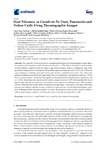Please use this identifier to cite or link to this item:
http://www.alice.cnptia.embrapa.br/alice/handle/doc/1065972Full metadata record
| DC Field | Value | Language |
|---|---|---|
| dc.contributor.author | CARDOSO, C. C. | pt_BR |
| dc.contributor.author | LIMA, F. G. | pt_BR |
| dc.contributor.author | FIORAVANTI, M. C. S. | pt_BR |
| dc.contributor.author | EGITO, A. A. do | pt_BR |
| dc.contributor.author | SILVA, F. C. de P. e | pt_BR |
| dc.contributor.author | TANURE, C. B. | pt_BR |
| dc.contributor.author | PERIPOLLI, V. | pt_BR |
| dc.contributor.author | McMANUS, C. | pt_BR |
| dc.date.accessioned | 2017-03-03T11:11:11Z | pt_BR |
| dc.date.available | 2017-03-03T11:11:11Z | pt_BR |
| dc.date.created | 2017-03-03 | pt_BR |
| dc.date.issued | 2016 | pt_BR |
| dc.identifier.citation | Animals, v. , p. , 2016. | pt_BR |
| dc.identifier.uri | http://www.alice.cnptia.embrapa.br/alice/handle/doc/1065972 | pt_BR |
| dc.description | The objective of this study was to compare physiological and thermographic responses to heat stress in three breeds of cattle. Fifteen animals of each of the Nelore, Pantaneiro and Curraleiro Pe-Duro breeds, of approximately two years of age, were evaluated. Heart and respiratory rates, rectal and surface temperature of animals as well as soil temperature were recorded at 8:30 and 15:30 on six days. Variance, correlation, principal factors and canonical analyses were carried out. There were significant differences in the rectal temperature, heart and respiratory rate between breeds (p < 0.001). Nelore and Pantaneiro breeds had the highest rectal temperatures and the lowest respiratory rate (p < 0.001). Breed was also significant for surface temperatures (p < 0.05) showing that this factor significantly affected the response of the animal to heat tolerance in different ways. The Curraleiro Pe-Duro breed had the lowest surface temperatures independent of the period evaluated, with fewer animals that suffered with the climatic conditions, so this may be considered the best adapted when heat challenged under the experimental conditions. Thermography data showed a good correlation with the physiological indexes, and body area, neck and rump were the main points. | pt_BR |
| dc.language.iso | eng | eng |
| dc.rights | openAccess | eng |
| dc.subject | Adapted breeds | pt_BR |
| dc.title | Heat tolerance in Curraleiro Pe-Duro, Pantaneiro and Nelore cattle using thermographic images. | pt_BR |
| dc.type | Artigo de periódico | pt_BR |
| dc.date.updated | 2017-03-03T11:11:11Z | pt_BR |
| dc.subject.nalthesaurus | Animal adaptation | pt_BR |
| dc.subject.nalthesaurus | Bioclimatology | pt_BR |
| dc.subject.nalthesaurus | Heat stress | pt_BR |
| dc.subject.nalthesaurus | Thermography | pt_BR |
| riaa.ainfo.id | 1065972 | pt_BR |
| riaa.ainfo.lastupdate | 2017-03-03 | pt_BR |
| dc.contributor.institution | CAIO CESAR CARDOSO, UNB; FLÁVIA GONTIJO LIMA, UFG; MARIA CLORINDA SOARES FIORAVANTI, UFG; ANDREA ALVES DO EGITO, CNPGC; FLÁVIA CRISTINA DE PAULA E SILVA, UNB; CANDICE BERGMANN TANURE, UNB; VANESSA PERIPOLLI, UNB; CONCEPTA McManus, UNB. | pt_BR |
| Appears in Collections: | Artigo em periódico indexado (CNPGC)  | |
Files in This Item:
| File | Description | Size | Format | |
|---|---|---|---|---|
| heattoleranceincurraleiro.pdf | 334 kB | Adobe PDF |  View/Open |









